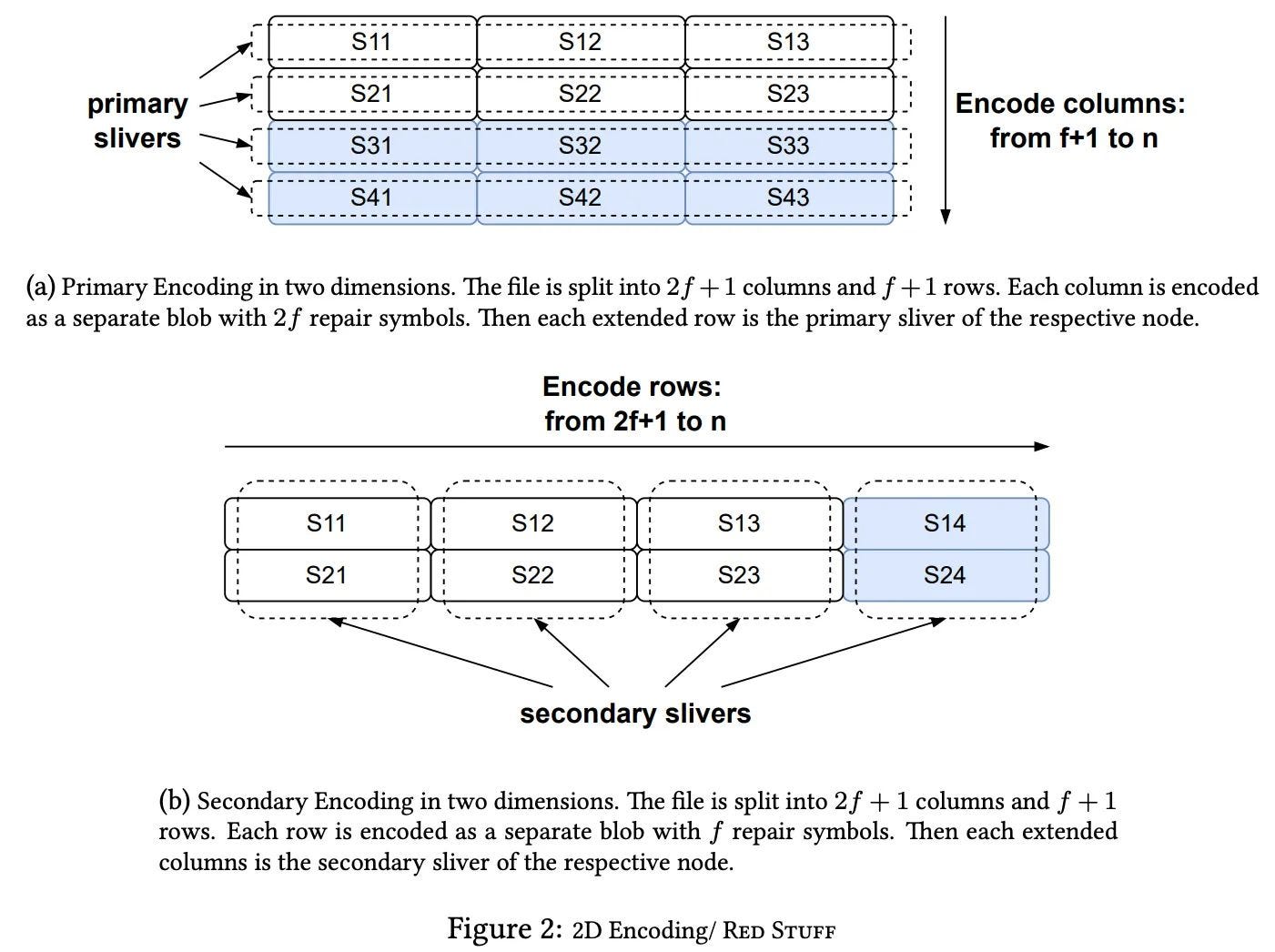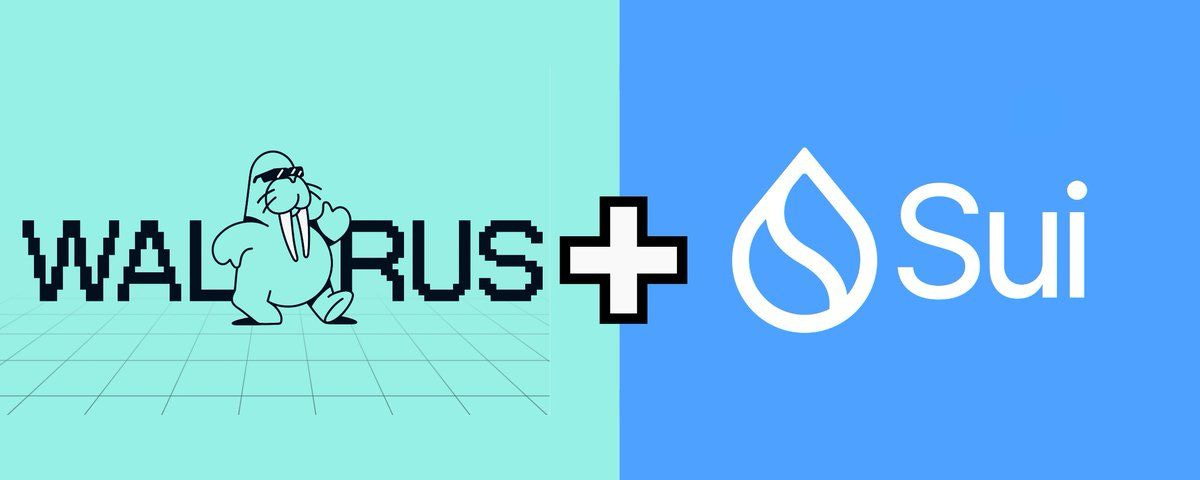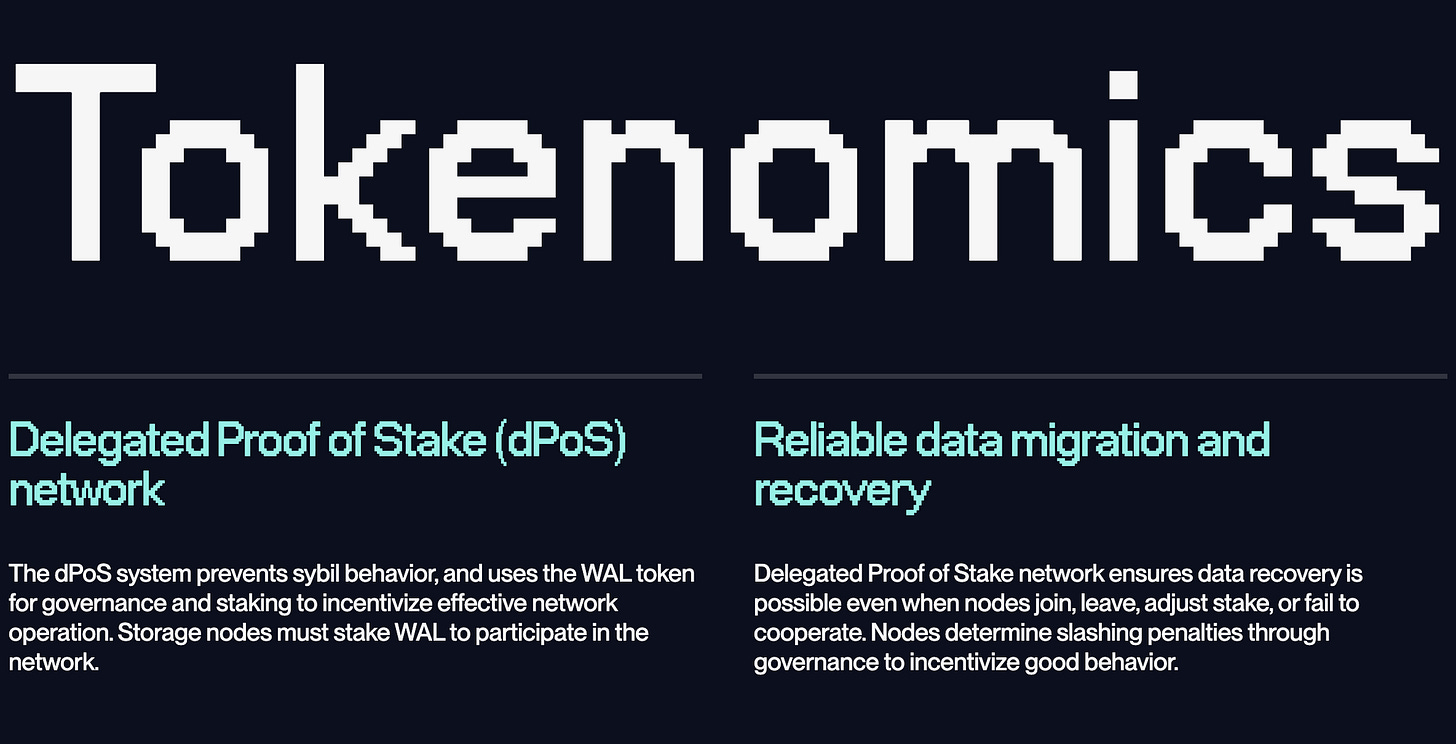【Walrus】Next generation distributed storage created by Sui development company / @WalrusProtocol
This is a new generation of distributed storage project that Sui is focusing on.
Good morning.
Mitsui from web3 researcher.
Today CryptoCrypto is a contributed article by Mr.Following the previous Sui complete review, this is a description of the latest high-profile project in the Sui ecosystem, Walrus.
Premise: Why do we need new distributed storage?
1. Overview
2. Key Walus technologies
3. Walrus and Sui integration
4. Talkonomics
5. Summary
Premise: Why do we need new distributed storage?
In the digital age, data is also known as the new oil, and its value and how it is used is shaping the future.However, in today's Internet environment, many challenges exist in owning and managing data.Data is stored on centralized servers over which individual users rarely have true control.This creates problems such as invasion of privacy, data tampering, and restricted access.
Distributed storage technology offers one solution to this problem.However, existing distributed storage solutions, such as the InterPlanetary File System (IPFS), distribute stored data across multiple nodes, requiring data to be searched across the entire network each time it is accessed.Because data is searched from distributed nodes, processing large files and frequently accessed data becomes more complex, resulting in poor performance.In addition, with IPFS, once data is stored, whether or not it is retained depends on node side management, so if the node is not maintained, the data will be lost.The Filecoin mechanism is in place to prevent this, but it is a risky mechanism in terms of redundancy if the incentives become less attractive to node operators.
Against this backdrop, the need for a new type of distributed storage system, Walrus, emerges; Walrus is designed to solve these problems and enable faster and more efficient data management.This article describes this new distributed storage system in detail.
1. Overview
Next Generation Distributed Storage Solution
Walrus is a next-generation distributed storage solution specifically designed to improve data security and accessibility developed by Mysten Labs, a Sui development company.The technology eliminates the vulnerabilities of centralized storage systems and provides users with true data sovereignty.
Walrus' fundamental strengths include fast processing and high scalability, similar to Sui.Through the use of parallel processing and distributed indexing, data storage, indexing and caching functions are handled in parallel within the network, resulting in high scalability.
Innovative "Red Stuff" encoding system
The core technology of Walrus is an encoding system called "Red Stuff".This system efficiently breaks data into smaller pieces and distributes them across multiple nodes on the network.Even if a portion of the data is lost, it has the ability to quickly recover the original data from the remaining fragments.
While IPFS relies on human node management to determine how long data is retained, and if this is not fulfilled, the stored data may be lost, Walrus has automatic data redundancy due to this Red Stuff mechanism.
In addition to increasing redundancy, this mechanism also contributes to faster data access, as data can be retrieved from multiple nodes simultaneously.
Integration with Sui Blockchain
Additionally, Walrus is tightly integrated with Sui blockchain technology.This integration allows data to function as a programmable asset, rather than just static information.Developers can create new types of digital services and applications that directly manipulate data and automatically trigger actions based on conditions.This innovation greatly expands the flexibility of data management and accelerates the development of distributed applications.
2. Walus Key Technologies
Walrus is notable for its distributed storage architecture and innovative encoding system designed to maximize data integrity and access efficiency.This section delves into the technical architecture of Walrus and its functional elements.
Basic Architecture
The architecture of Walrus consists of multiple distributed storage nodes.These nodes store data and answer queries (queries) for needed data.Data is duplicated and stored on multiple nodes while being managed as a whole.This means that if a problem occurs in one node, access to the data as a whole is less likely to be affected.In other words, each node functions as part of the overall network, operating independently but cooperating with other nodes.This reduces the risk of a single point of failure that centralized storage systems have, and as a storage system, improves fault tolerance.
Storage Nodes
Each storage node holds a portion of the data and receives specific pieces of data (slivers).Because data is stored redundantly across nodes, data integrity and consistency across the system is maintained even if some nodes fail.Nodes also have the ability to dynamically scale according to data demands, ensuring efficient data access even during peak usage periods.
Red Stuff encoding system
One of Walrus' core technological advancements is an encoding system named "Red Stuff".It is based on an advanced "elastic coding scheme" designed to efficiently store data with redundancy and minimal storage space.
Specifically, the data is broken into smaller pieces, each piece being independently distributed to the other nodes.The advantage of this approach is that if 2/3 of the network loses data, the original data can be completely reconstructed from the remaining pieces.This dramatically improves data durability and access reliability, allowing even large systems to operate efficiently.
This dramatically improves data durability and access speed, making it especially efficient in managing large data sets.
3. Walrus and Sui Integration
The integration of the Walrus and Sui blockchains is a revolutionary step in the future of data storage and blockchain technology.This integration opens new avenues to unlock the full potential of Web3.Below is a detailed description of the innovations brought about by data programmability.
Data Programmability and Innovation
Data programmability is the ability to perform automatic operations on the data itself using smart contracts.While traditional storage could be combined with Oracle to allow external data to be accessed on-chain, Walrus allows for a seamless connection to Sui, allowing Sui's smart coin tracts to access Walrus data directly!This is exactly what Walrus and Sui can do.This is what the author sees as the most innovative part of the Walrus-Sui integration: the combination of Walrus and Sui transforms data into a dynamic asset that can be treated as
Conditional Data Access: Enables the configuration of smart contracts that control access to data based on specific conditions.This ensures that only users with verified usage rights have access to the data, thereby enhancing privacy protection and data security.
Automated data manipulation: Smart contracts can be used to automatically process data when it meets certain conditions.For example, notifications can be set up to automatically send notifications when certain data patterns are detected, or to periodically back up data.
Creating new economic models: New data-based business models and marketplaces can emerge.By tokenizing the right to use data and trading it in the marketplace, the value of data can be directly linked to economic activity.
Thus, the integration of Walrus and Sui contributes to opening up new possibilities in the Web3 world by transforming data into something that is easier to use, more secure, and has economic value.This will enable developers to create more innovative applications and ultimately provide a richer digital experience for end users.
Specific ideas for Walrus+Sui
In "Walrus + Sui: This Is How You Tap Into the Full Potential of Web3The combination of Walrus and Sui blockchain offers a number of concrete applications and innovative ideas.This integration will greatly advance the use, management, and economic value creation of data in the Web3 environment.The following is a description of some of the most noteworthy applications of this integration.
Use in the Financial Industry
The financial sector can use Walrus for highly secure data storage and transaction transparency.In particular, the use of blockchain technology to store trade data and provide a real-time audit trail can significantly reduce the risk of fraudulent transactions.For example, all trade records can be stored immutably using a distributed ledger to meet regulatory and compliance requirements of authorities.It can also use smart contracts to implement automated clearing (confirming transactions, coordinating between parties to a transaction, and preparing procedures for payment and receipt) and settlement processes, which can significantly increase efficiency.
Distributed Media Streaming Service
Leveraging Walrus' storage capabilities and Sui's transaction processing power, a fully decentralized media streaming platform can be built.The platform allows content creators to upload their work directly and viewers to access it while securely transacting on the Sui blockchain.This facilitates direct and transparent economic activity without the intervention of a centralized platform.
Use in Scientific Research
The field of scientific research requires large amounts of data to be stored securely and shared with researchers around the world. Walrus distributed storage provides the flexibility to control access while maintaining the security of research data,Rules can be set to automatically change the scope of publication when scientific research data expires, or to allow data access only under certain conditions.This improves data security and efficiency.
Transparent Supply Chain Management
By combining Walrus and Sui, a decentralized supply chain management system can be created that records and tracks each step of a product's journey from manufacturing to reaching the consumer in real time.Since the details of each transaction are recorded in the blockchain, any irregularities or errors can be immediately identified and overall transparency is guaranteed.
Decentralized Finance (DeFi) Extension
More complex distributed financial services can be provided by leveraging Walrus' data storage and Sui's high-speed transaction processing capabilities.For example, a system could securely store a user's credit history and transaction data, and automatically approve loans based on that data.
As these examples show, the combination of Walrus and Sui can be a powerful tool for maximizing the value of data and enabling new business models and services.This innovative technology integration is expected to further develop the Web3 world and create a paradigm shift in many industries.
4. Talkonomics
Walrus' economic model is built around WAL tokens and utilizes the Delegated Proof of Stake (DPoS) mechanism.The model aims to optimize incentives between users and storage nodes while maintaining network security and efficiency.Below are the details, specific usage, and incentive structure of the model.
Role of the WAL Token
WAL tokens are the primary unit of currency in the Walrus ecosystem.They are used for multiple purposes, including
Purchase of storage services
Participation in governance
Incentive distribution
Users use WAL tokens to purchase storage space and store data on the Walrus network.Tokens are also distributed to storage nodes as a reward for their contribution to the network, thereby promoting the healthy operation of the network.
Delegated Proof of StakeMechanism of the Delegated Proof of Stake
Delegated Proof of Stake (DPoS) is a system in which token holders have voting rights in proportion to the amount of tokens they hold.Token holders use their own tokens to elect trusted storage nodes as "delegates," which ensures network security and data integrity.The elected delegates play an important role in the operation of the network, such as generating new blocks and verifying transactions.This system allows for efficient and democratic network operation while avoiding centralized control.
Incentives
The WAL token system provides a sound incentive between users and storage nodes.Users pay an appropriate price for securely storing their data, and storage nodes are rewarded for providing services.This economic model encourages participants to maintain and improve the quality of the network.
Governance Role
WAL tokens also play a central role in the governance process.Token holders can participate in key ecosystem decisions, such as voting on proposals and policy changes.This ensures that all users have a say in the future of the network, and decentralized governance is achieved.
In this way, Walrus' economic model and governance structure strengthens its capabilities as a distributed storage solution and forms the foundation for providing a sustainable and transparent data management environment.
5. SUMMARY
Walrus is paving the way for the future of distributed storage technology.The platform has the potential to revolutionize the way we use the Internet by providing data storage integrated with blockchain capabilities.In particular, by increasing the programmability and interactivity of data, developers can easily build new types of applications and provide a richer, more dynamic online experience for end users.
Walrus technology plays a key role in providing the scalability and security required for distributed applications.It allows data to be stored in a distributed manner more securely and efficiently than typical cloud storage solutions.Integration with Sui also allows data to be seamlessly linked to smart contracts for automated transactions and complex data processing.
In this way, Walrus should make a significant contribution to the future of the digital society by fundamentally revolutionizing the way decentralized data is managed and used.
🔗Reference/image credit: HP / X
Disclaimer:I carefully examine and write the information that I research, but since it is personally operated and there are many parts with English sources, there may be some paraphrasing or incorrect information. Please understand. Also, there may be introductions of Dapps, NFTs, and tokens in the articles, but there is absolutely no solicitation purpose. Please purchase and use them at your own risk.
About us
🇯🇵🇺🇸🇰🇷🇨🇳🇪🇸 The English version of the web3 newsletter, which is available in 5 languages. Based on the concept of ``Learn more about web3 in 5 minutes a day,'' we deliver research articles five times a week, including explanations of popular web3 trends, project explanations, and introductions to the latest news.
Author
mitsui
A web3 researcher. Operating the newsletter "web3 Research" delivered in five languages around the world.
Contact
The author is a web3 researcher based in Japan. If you have a project that is interested in expanding to Japan, please contact the following:
Telegram:@mitsui0x
*Please note that this newsletter translates articles that are originally in Japanese. There may be translation mistakes such as mistranslations or paraphrasing, so please understand in advance.






